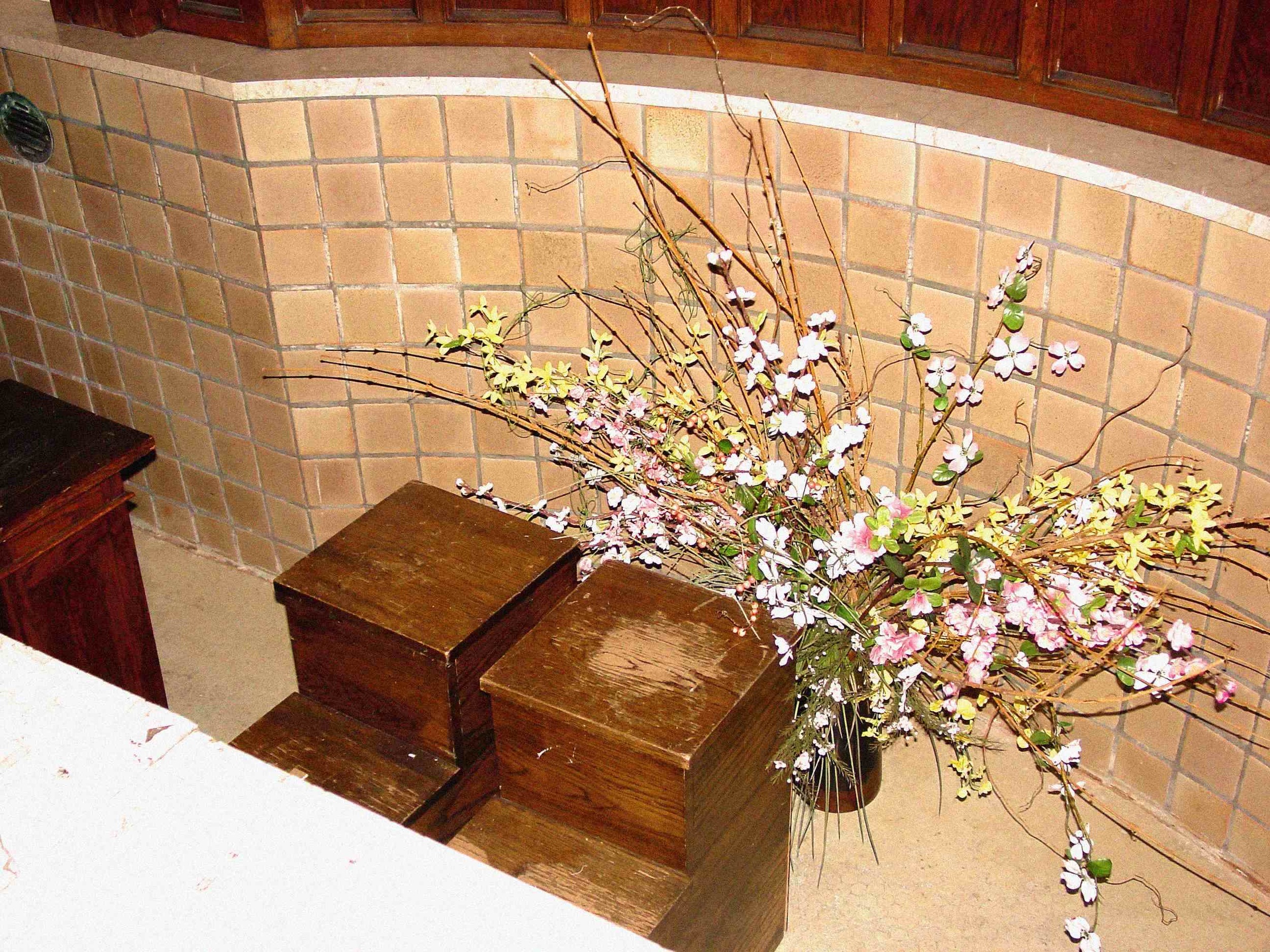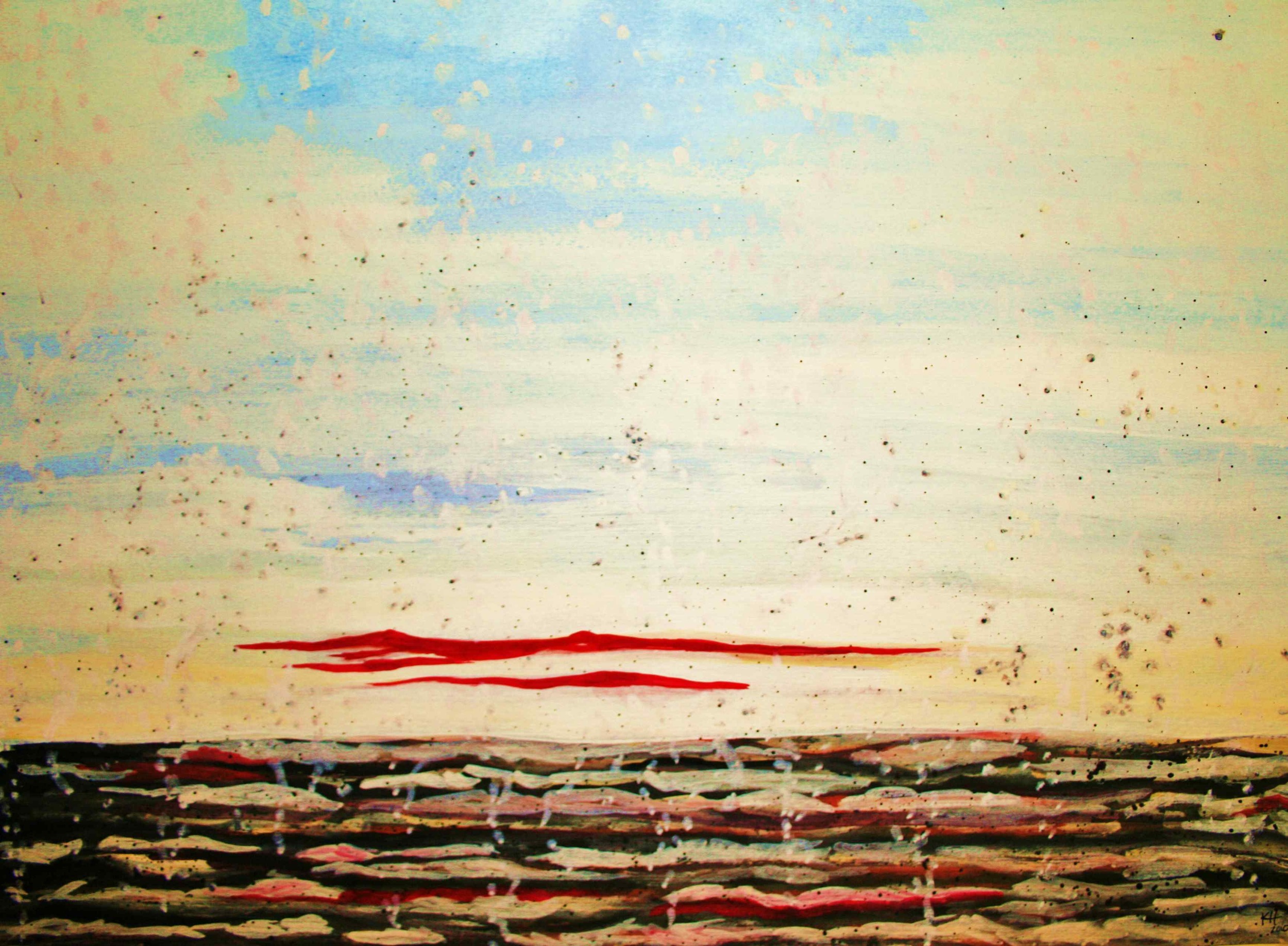A little over five years ago, I entered the Walnut Hills Christian Church for the second time. While the first time was just a momentary opportunity to check out the facility to see if our new church could rent it out, the second time was a more thorough examination of the building. And this time I had my camera with me. I snapped quite a few photos that day, but one of them stood out among the rest. It was this one:

It might be difficult to recognize what this is, but it's a baptistry— a pool in which people are baptized; at the time, it was being used by the church for storage. I transformed that image into a visual allegory for our young church: that we were called to come into this neighborhood, shake off the spiritual cobwebs, and call people to repentance. The goal I articulated for our new church was to redeem this scene and put that baptistry to good use.
Throughout those earlier years, I would bring out that baptistry photo a couple of times a year to remind people of its place in our story. "We are here," I declared, "to see this baptistry get used again." It became a sort of unofficial mantra of our church. But an interesting thing happened throughout those early years:
We baptized no one.
This is not because we did not teach the gospel. This is not because we were an insular congregation. This is not because we don't care about lost people. This is because many of the people who came to us over the years were renewing their faith—having once devoutly followed Jesus, they were returning to the church once again.
Unfortunately, for my church tradition, the litmus test for church success is baptism—if you're not baptizing people, then you're not being faithful. As a result, I've been involved in situations where the M.O. was "baptize first, ask questions later." Over my ministerial career, I regrettably baptized some people that I shouldn't have; they were in a rush for a cleansing rather than a complete transformation. As we started Echo, I assured myself that I would never again cheapen baptism. So I refuse to coerce people into doing it. Obviously, I teach it from the pulpit (it's impossible to engage the Scriptures and not come face to face with baptism), but I'm not going to scare someone into doing it just so I can feel like we have a successful church.
All of this brings me to this year. Since January I have been thinking about this topic even more. We've continued to add more people over the past couple of years and I'm sure some of them might never have been taught about obedience to baptism. Perhaps this year, we would finally fulfill that mission I captured in a picture years ago. I knew I'd be preaching through Exodus and that in 1 Corinthians the apostle Paul used Israel's Red Sea crossing as a metaphor for baptism. I imagined we'd have a general baptism day where we could celebrate baptism and see it fulfilled before our eyes. We had that service this past Sunday.
We baptized no one.
But God used all of this for a valuable lesson.
A couple of months ago, Kathy approached my wife to talk about baptism. Although she had grown up in Christ, and had even attended a Christian university, she had never been challenged with baptism. Something I said in a sermon resonated within her and she decided she wanted to be baptized. On a weeknight this summer, we had the baptistry filled with water, and my wife, my daughter, Kathy's husband and I witnessed her baptism. Yes, without any fanfare, Kathy became the first person baptized at Echo.
But the interesting thing is I do not believe that Kathy wasn't saved before this moment. She had lived a faithful life before the Lord but she had never been fully exposed to this understanding of baptism. Her decision was one of obedience. And that is what we at Echo are attempting to do in our ministry in the city: call all of God's children to obedience, which includes baptism in Him. We might only have one baptism under our belts, but our church strives to daily live in godly obedience.
One other thing: I asked Kathy to share her baptism with our church on Sunday. I even suggested, since she is quite the artist, that she make a work of art to express what happened through this process. She did and her is what it looks like:

And a new allegory is born.
We're going to get this picture framed and hang it somewhere in the building. That picture of a baptistry used as storage space will now be replaced with this image of art by a person who embraced obedience to the Lord. It's a powerful image.
I'm thankful that it's now part of our story.